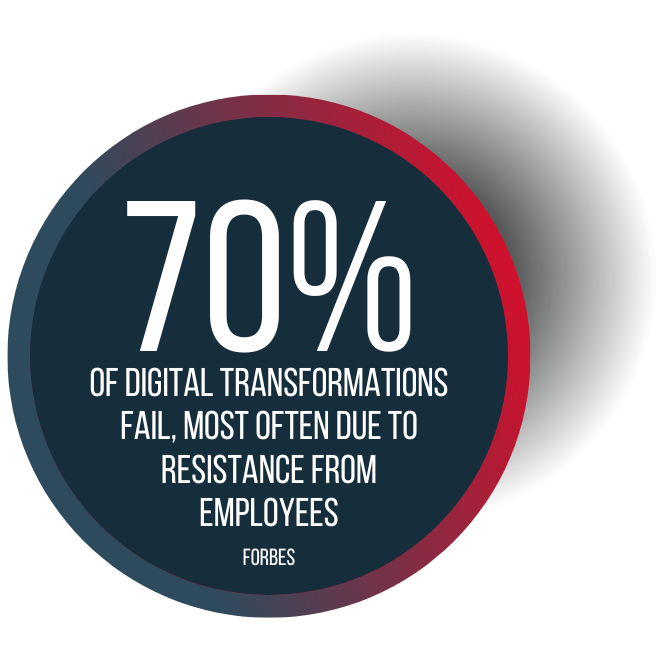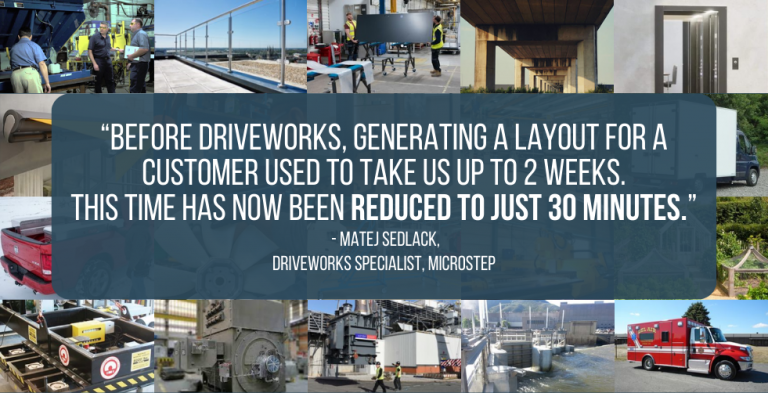
Every business has a different approach to digital transformation, depending on specific circumstances and needs.
There are many reasons why you may be planning a digital transformation strategy – there may be bottlenecks in your processes, you may be struggling to keep up with demand, you might want to dedicate more time to research and development or you might be looking to set your company apart from competitors.
Whatever your challenges are, and whatever your goal is, it’s important to make sure the digital technologies you implement work for your organization.
Below are our top tips for ensuring your approach to digital transformation is tailored and achievable.

As with any project, it’s important to plan first. A good place to start is by identifying current gaps and challenges that need attention.
To get an in-depth understanding it’s important to get input from all of your workforce. There are often issues within processes that team members get used to, and are happy to work around. Or, perhaps because it’s always been that way, they don’t want to raise it as an issue. However, empowering teams to question processes and suggest improvements encourages them to highlight where inefficiencies could be reduced. Identifying bottlenecks, and areas where processes are often delayed is key to making improvements.
Use this knowledge and research to define your digital transformation goals and make a plan for how you will achieve them.

The prospect of creating long-term goals for digital transformation can seem daunting. It’s important to remember you don’t have to make big changes at once. Digital transformation is scalable. The key is identifying an appropriate and achievable goal and then breaking it down into small steps. This reduces the time and cost required to plan and implement the strategy but also helps with employee engagement. Small changes over a period of time are much easier to accept and adapt to. Breaking down the task makes it more attainable and there’s also a quicker sense of satisfaction. Seeing results sooner boosts attitudes toward digital transformation and increases adoption and acceptance.
The ideal strategy for digital transformation is to start small and build on your successes.

Analysing and tracking is critical to ensuring your digital transformation strategy, and the digital tools you implement, are the most appropriate for you organization.
Identify and measure Key Performance Indicators (KPIs), calculate return on investment (ROI), gather employee and customer feedback, track time and cost savings, and measure organization agility, innovation and performance.
Continuously monitoring enables you to learn as you go, make adjustments and build on your successes.
Whilst numbers and KPIs are important, the people within an organization are integral to the success of digital transformation so it’s vital to consider and gather feedback on how they feel, and how technologies are making a difference to the workforce.
Taking a Scalable Approach
The key takeaway from our tips above is: digital transformation is not one-size-fits-all. You can do as much, or as little as you like. Seeing small, incremental results boosts attitudes toward digital transformation and increases adoption and acceptance. It’s then easier to build on your digital approach. As you implement, track, adjust and build on your digital transformation strategy, you may also uncover new ideas or opportunities. Things that you hadn’t previously considered, or things that weren’t possible but can now be implemented using the capabilities of digital technologies. Whilst you don’t need to do everything all at once – it is still important to think about your potential future needs when choosing your digital tools. It’s much easier to add to and adapt existing tools, rather than replace them. In your research and planning, consider how you can build on the digital tools you’re investing in at the beginning, and how flexible and scalable they are.
Making Digital Transformation Work for Your Workforce
People are a common theme in our top tips, because people are at the heart of digital transformation.
Whilst there are many benefits to digital transformation, resistance from employees is a common barrier to success. 70% of digital transformations fail, most often due to resistance from employees.
Employees can be resistant to change and adapt to new ways of doing things. The fear of the unknown is sometimes too much, especially for those having to learn new skills. Employee education is vital, to alleviate concerns about changing processes that already work, and they are comfortable with.
There is also a misconception that digitizing areas of a company means a loss of jobs. Digital technologies mean employees aren’t wasting their valuable time. Automating mundane tasks enables them to work more efficiently and dedicate time to creative, more valuable tasks.
Recognizing these concerns amongst employees is the first step to helping them overcome them. Companies need to work with employees, to help them understand how technology can make their day-to-day tasks easier and more rewarding. Human and digital workforces should work hand in hand, to make entire business systems work better.
Adopting new tools and technologies is the ideal opportunity for individuals to learn new skills, the valuable skills necessary for a future-ready workforce.

Testing Before Investing
When planning out your approach to digital, it’s often difficult to know where to start and what will work. Look for free versions of a tool so you can try it out first and see how useful it is for you and your teams. Free versions offer entry-level functionality to help you identify what you need from a tool to reach your goals. You can also use free trial periods to test out features, and give you a head start on implementing a tool. Free versions and free trials are a great way of figuring out what works for you, before committing to a tool and investing time and money.
You might even be able to do more with the existing technologies you already have. What technologies do you already have in your business? Are you using them to their full potential? Are there features and functionality you’re not using? Does one team use a digital tool that would also be useful for another team? Do you have access to additional tools that you’re not using?
Digital transformation isn’t about changing everything, it’s about improving your processes and making the most of your existing resources, empowering your people and boosting business success, now and for the future.
How are DriveWorks Customers Using Digital Technologies?

DriveWorks is used by manufacturing companies from a range of industries.
DriveWorks is modular, scalable, and incredibly versatile. Our customers use DriveWorks in many different ways, building a Design Automation and CPQ solution to suit their needs.
Since implementing DriveWorks, manufacturers have:
- Reduced design time
- Created great customer experiences
- Improved efficiency
- Reduced costly errors
- Dedicated more time to research and development
Find out more about how manufacturers are using DriveWorks here.